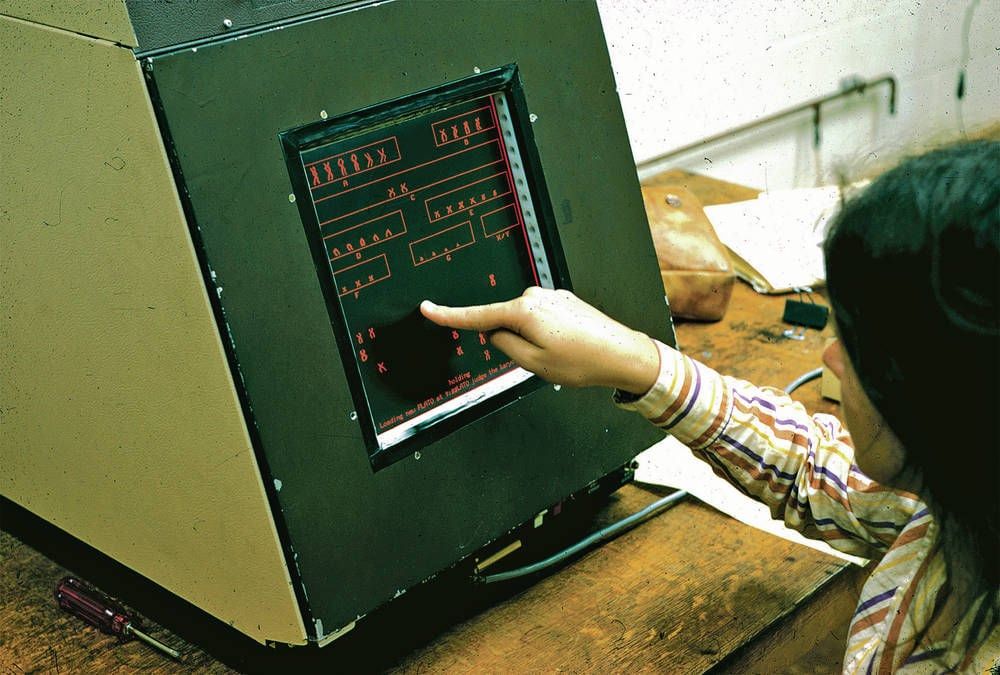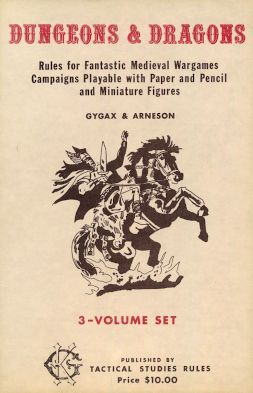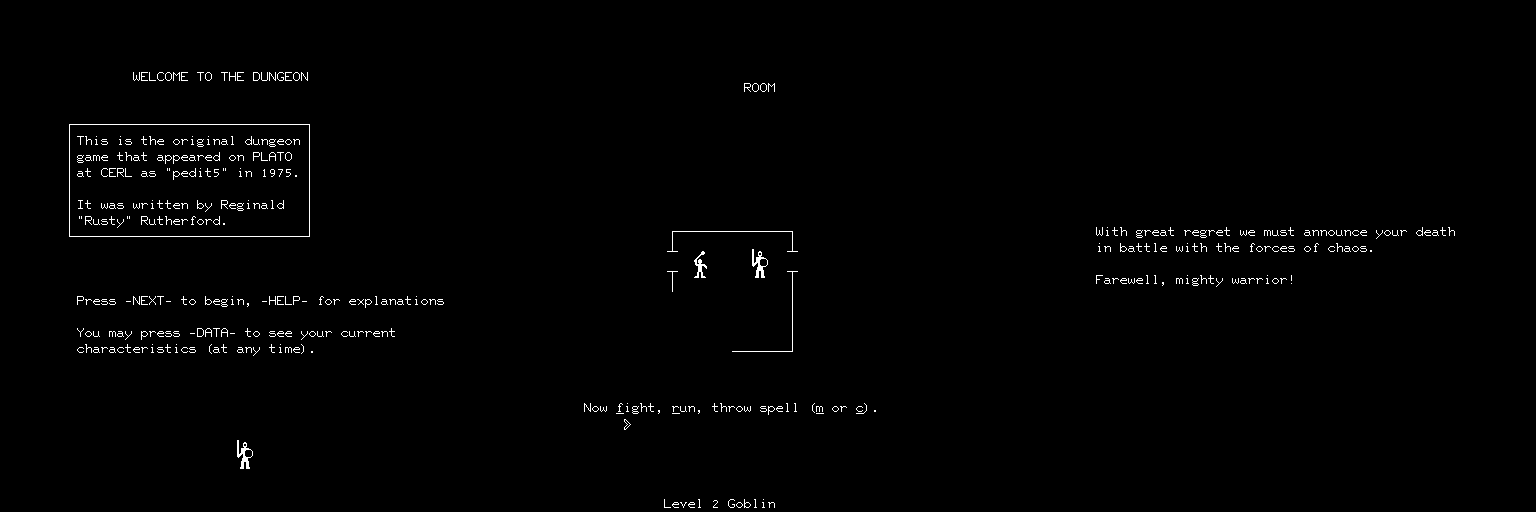PLATO and the Dawn of the Computer RPG
Back to the beginning

In 1960, the University of Illinois inadvertently created a new genre of video games. That was the year that they introduced the world to PLATO, a novel computer network system. The University of Illinois was already a trailblazer in the area of computer science, being the first educational institution to develop and own a computer - the ILLIAC I, built in 1952. But the PLATO system may have been even more significant, as it introduced a range of features that were all but unknown in the pre-Web world.
For our purposes, there are two particularly interesting features: Orange plasma displays which could render vectors (and thus true graphics), and shared variables which allowed for network play. Limited as these features were, they allowed for the development of computer games that were far more sophisticated than those running on other systems of the time.
We could look at any number of games designed for PLATO, but the most interesting by far didn't come until the mid-70s after the release of the very first edition of Dungeons & Dragons. Inspired by the legendary RPG, many students set about to create their own versions. Thus, the dungeon crawler - the first wholly electronic RPG - was born.
The good news for history buffs is that, thanks to the folks at Cyber1, it's possible to emulate a wide range of games that originally ran on the PLATO network. So if you feel like playing a nearly 50-year old game that's impossibly primitive by modern standards, you can.

Before we jump into the games, I should take just a moment to touch on what came before them.
Starting around 1970, fans of wargames started experimenting with a new type of game in which players controlled individuals instead of directing armies. The most significant of these was the "Blackmoor campaign," a late medieval wargame run by Dave Wesley and Dave Arneson. Whereas most of these experimental games were exercises in pure storytelling, Arneson added mechanics to the game using Chainmail, a wargame rulebook that had been co-developed by Gary Gygax, one of Arneson's collaborators in the wargame space.
This was the genesis of Dungeons & Dragons, officially introduced to the world in 1974. Much has been said about the influence that Dungeons & Dragons exerted on the burgeoning video game market, and yet it never seems like enough. I'd go so far as to say that video games as we know them might not exist at all were it not for the work undertaken by Gygax and Arneson.
In particular, Dungeons & Dragons introduced two innovations to the world of games. First, it proved that a game could be purely cooperative instead of competitive. Second, it demonstrated that a game could be driven by exploration and storytelling as much as it was by its mechanics.
It was a big hit, and programmers wasted no time trying to adapt it.

Barely a year after the commercial release of Dungeons & Dragons, Rusty Rutherford created its first electronic adaptation under the peculiar name "pedit5."
The name was an artifact of the times. While the creator might have intended the game to be known by another name (both "The Dungeon" and "Monsters" are often cited), he was limited by the system. This program was in the fifth pedit slot, hence it is now known to history as pedit5.
It's an odd game because it came from an odd place. The idea was to take the cooperative Dungeons & Dragons and translate it into something that could be played by a single person. With the networking capabilities of PLATO, it was possible to play Dungeons & Dragons by email, but pedit5 was a different experience. This would be a "kick in the door" campaign - no plot, no exploration, just a single Player Character and an army of monsters to kill.
Playing pedit5 a half-century after its development feels very strange, not the least of which because of the simplicity of the game. We are talking about a title that predates Baldur's Gate, Eye of the Beholder, even the Gold Box games. This is Dungeons & Dragons stripped down to the nuts and bolts.
Upon loading into pedit5, the player is induced to create a character with only four of the six stats from Dungeons & Dragons. There are no races and no classes - every character is an omni-class character who can do a little bit of everything. There is exactly one dungeon that never changes geographically. Combat is completely automatic. Upon encountering a monster, your choices are to run, cast a spell (most of which are meant to incapacitate the monster), or fight. Choose the latter - or fail at one of the others - and the game will bluntly inform you as to whether you have lived or died.
Also, you can fail to open a door. That's maybe my favorite part.
Yes, pedit5 is crude. But this is a game from 1975 - a time when, for most people, "video games" meant bouncing a pixel back and forth across a screen. This game was way ahead of its time - and what's more, there were plenty of people waiting in the wings to iterate on it.

First developed the same year as pedit5, DND (a.k.a. The Game of Dungeons) was a parallel effort by Gary Whisenhunt and Ray Wood to develop a Dungeons & Dragons game. This was a more long-term project, though, with other programmers (notably Dirk Pellett) making additions for a decade thereafter.
There are many versions of DND, but even the earliest ones are far more sophisticated than pedit5. This game features more of the mechanics one might expect from a Dungeons & Dragons game, including player races (all of which are still effectively multi-class), a wide range of magical items and spells, traps, monsters with special attributes, a larger dungeon, and a proper objective with powerful end-game monsters. Indeed, DND is often credited as the very first game to include boss enemies.
Improvements aside, DND remains a brutal game. It's not unusual to die to the very first monster you encounter, particularly as the game can spawn high-level monsters on the first floor. My very first session began with my 1st level character in the same tile as a vampire - the early Dungeons & Dragons kind with the level-draining attack. At least death was swift.
Perhaps because of its more extensive development period, DND has a much messier history than pedit5. Copies and variations of the game appeared on other computer systems and even for sale in some computer stores. Whether these other games constitute iterations or theft depends on whom you ask.

The most interesting games from the PLATO era are the MUDs. For those not familiar, MUD stands for "multi-user dungeon" and the games in this genre are proto-MMORPGs. These games constitute some of the first online games ever developed.
Network play over PLATO was a possibility, but the slow I/O speeds meant that most games weren't going to work out. The earliest efforts were simple electronic recreations of traditional games, but in time the programmers started pushing their limits. RPGs were a natural fit for these experiments - after all, there were already plenty of single-player RPGs (and thus a known demand) and the slower paced gameplay meant that they could work even over a sluggish connection.
Development of the first MUDs started around 1977, just two years after the initial dissemination of pedit5 and DND. The first significant release was Oubliette, a game that would eventually inspire the Wizardry series. This was followed by Moria, a group-based RPG that had been in development since at least 1976. The most refined game is Avatar (pictured above), which began development in 1976 and was formally released in 1979.
If you've never played a MUD, then it's going to take a lot of acclimation. While the fundamental gameplay of a MUD is nearly identical to that of an MMO, the text-based interface of such games makes for a steep difficulty curve. Avatar is already a very complex game that is meant to be played over a long period of time, but before you can get into the game proper you have to figure out how to control it - a task made all the harder by PLATO's unusual keyboards.
Those barriers to entry might be the most significant takeaway from this trip into the past. Accessibility is one of the less studied elements of computer game history. Under the hood, the games I've featured here are actually very similar to more modern dungeon crawlers or MMOs, but they differ significantly in how they are controlled and thus how they are experienced.
Non-commercial titles like these - games played exclusively by computer operators and programmers - can be very impenetrable precisely because they were never intended to be played by anyone but their creators. As the video game industry expanded over the following 40 years, developers and publishers made the very easy conclusion that it was better for them to make it easier for people outside of the video game space to jump into their titles.
Which isn't to say that there's no merit in these games. True, the dungeon crawler RPG is a fast-shrinking subgenre barely kept out of the grave by the likes of Etrian Odyssey, but it also formed a foundation upon which all other RPGs were built. Games like pedit5 and DND are punitively hard and can be frustrating to control, but it's interesting to see what elements from these ancient hobbyist titles have survived to today.
It's also amusing to see just how these students put this rare, expensive, cutting-edge hardware to work on idle pleasures. Decades before Minesweeper, people still found novel ways to waste time at work.
